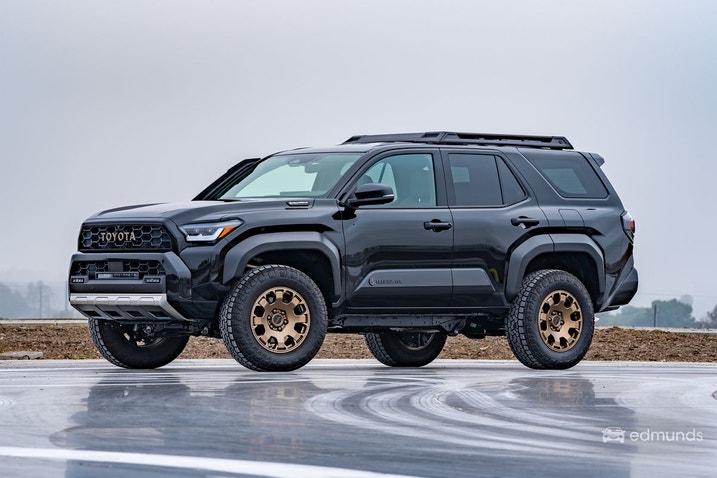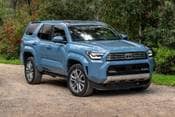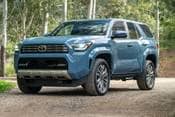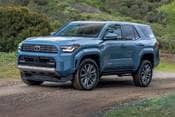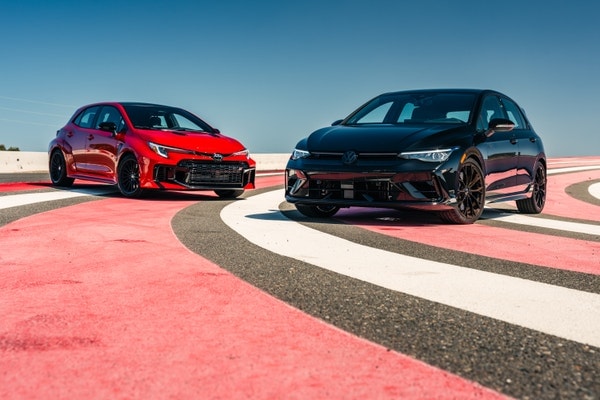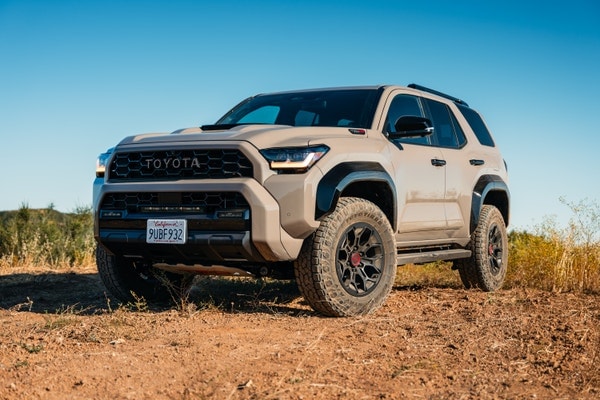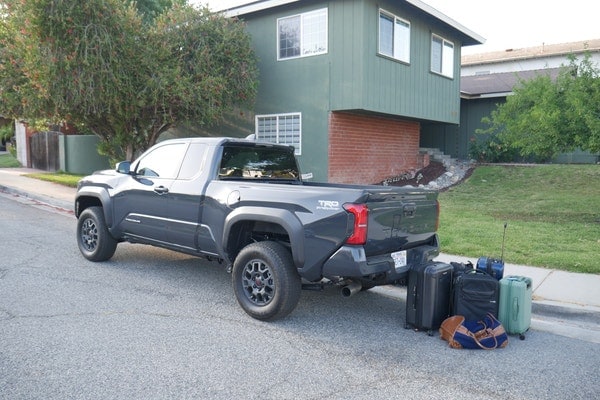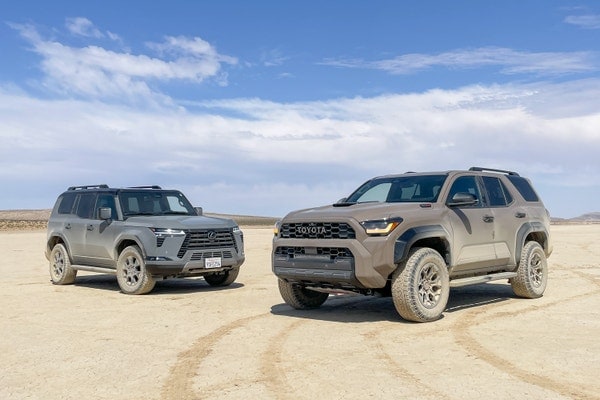2025 Toyota 4Runner Hybrid
Price Range: $52,490 - $67,400
Helpful shopping links
2025 Toyota 4Runner videos
Lexus GX 550 Overtrail vs. Toyota 4Runner TRD Pro: Off-Road Comparison Test
They may share a platform, but the latest Lexus GX 550 and Toyota 4Runner take entirely different approaches to the world of rough-and-tough SUVs — and one is clearly superior. In this video, Edmunds’ Brian Wong takes each SUV through a series of off-road challenges to find out which one is the better rig.
 Lexus GX 550 Overtrail vs. Toyota 4Runner TRD Pro: Off-Road ...
Lexus GX 550 Overtrail vs. Toyota 4Runner TRD Pro: Off-Road ... Toyota 4Runner TRD Pro vs. Honda Passport TrailSport: Off-Ro...
Toyota 4Runner TRD Pro vs. Honda Passport TrailSport: Off-Ro... Honda Passport vs. Toyota 4Runner vs. Jeep Grand Cherokee: T...
Honda Passport vs. Toyota 4Runner vs. Jeep Grand Cherokee: T... Toyota 4Runner Trailhunter vs. Ford Bronco vs. Jeep Wrangler...
Toyota 4Runner Trailhunter vs. Ford Bronco vs. Jeep Wrangler... Toyota 4Runner vs. Land Cruiser vs. Tacoma: Which One Comes ...
Toyota 4Runner vs. Land Cruiser vs. Tacoma: Which One Comes ... These Are the 2025 Cars, Trucks & SUVs We’re Most Excited Fo...
These Are the 2025 Cars, Trucks & SUVs We’re Most Excited Fo... FIRST LOOK: ALL-NEW 2025 Toyota 4Runner! | A Redesigned Off-...
FIRST LOOK: ALL-NEW 2025 Toyota 4Runner! | A Redesigned Off-...
PRICE CHECKER™
Check a dealer's price
Bring back a dealer's quote, and we'll tell you if it's a good price!
Check your price quote
Price:
$ -
Graph shown is a sample only
FAQ
Is the Toyota 4Runner a good car?
The Edmunds experts tested the 2025 4Runner both on the road and at the track, giving it a 7.7 out of 10. What about cargo capacity? When you're thinking about carrying stuff in your new car, keep in mind that the 4Runner has 42.6 cubic feet of trunk space. And then there's safety and reliability. Edmunds has all the latest NHTSA and IIHS crash-test scores, plus industry-leading expert and consumer reviews to help you understand what it's like to own and maintain a Toyota 4Runner. Learn more
What's new in the 2025 Toyota 4Runner?
According to Edmunds’ car experts, here’s what’s new for the 2025 Toyota 4Runner:
- The 4Runner is redesigned for 2025
- Turbocharged four-cylinder engine replaces previous V6
- Updated interior with new technology features
- 2025 model kicks off the sixth 4Runner generation
Is the Toyota 4Runner reliable?
To determine whether the Toyota 4Runner is reliable, read Edmunds' authentic consumer reviews, which come from real owners and reveal what it's like to live with the 4Runner. Look for specific complaints that keep popping up in the reviews, and be sure to compare the 4Runner's average consumer rating to that of competing vehicles. Learn more
Is the 2025 Toyota 4Runner a good car?
There's a lot to consider if you're wondering whether the 2025 Toyota 4Runner is a good car. Edmunds' expert testing team reviewed the 2025 4Runner and gave it a 7.7 out of 10. Safety scores, fuel economy, cargo capacity and feature availability should all be factors in determining whether the 2025 4Runner is a good car for you. Learn more
How much should I pay for a 2025 Toyota 4Runner?
The least-expensive 2025 Toyota 4Runner is the 2025 Toyota 4Runner TRD Off-Road 4dr SUV 4WD (2.4L 4cyl Turbo gas/electric hybrid 8A). Including destination charge, it arrives with a Manufacturer's Suggested Retail Price (MSRP) of about $52,490.
Other versions include:
- TRD Off-Road 4dr SUV 4WD (2.4L 4cyl Turbo gas/electric hybrid 8A) which starts at $52,490
- TRD Off-Road Premium 4dr SUV 4WD (2.4L 4cyl Turbo gas/electric hybrid 8A) which starts at $58,270
- Limited 4dr SUV 4WD (2.4L 4cyl Turbo gas/electric hybrid 8A) which starts at $60,700
- Platinum 4dr SUV 4WD (2.4L 4cyl Turbo gas/electric hybrid 8A) which starts at $63,360
- Trailhunter 4dr SUV 4WD (2.4L 4cyl Turbo gas/electric hybrid 8A) which starts at $67,400
- TRD Pro 4dr SUV 4WD (2.4L 4cyl Turbo gas/electric hybrid 8A) which starts at $67,400
What are the different models of Toyota 4Runner?
If you're interested in the Toyota 4Runner, the next question is, which 4Runner model is right for you? 4Runner variants include TRD Off-Road 4dr SUV 4WD (2.4L 4cyl Turbo gas/electric hybrid 8A), TRD Off-Road Premium 4dr SUV 4WD (2.4L 4cyl Turbo gas/electric hybrid 8A), Limited 4dr SUV 4WD (2.4L 4cyl Turbo gas/electric hybrid 8A), and Platinum 4dr SUV 4WD (2.4L 4cyl Turbo gas/electric hybrid 8A). For a full list of 4Runner models, check out Edmunds’ Features & Specs page. Learn more
